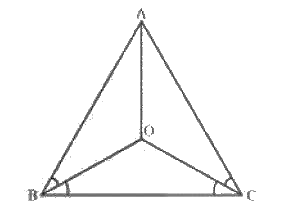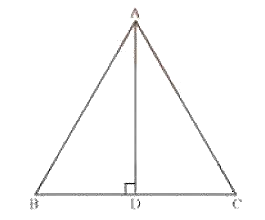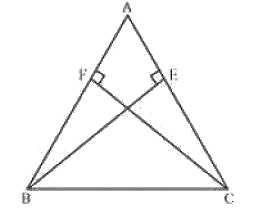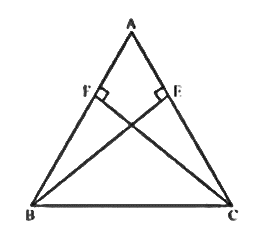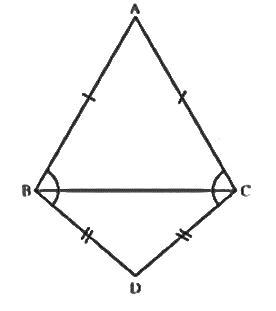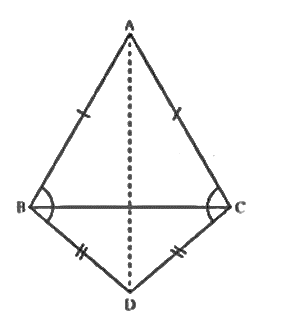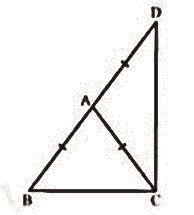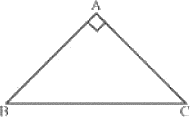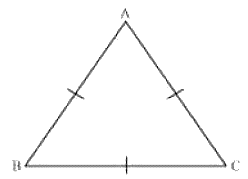NCERT Solutions for Class 9 Maths Chapter 7 Triangles Exercise 7.2 - FREE PDF Download
NCERT Solutions for Class 9 Maths Chapter 7 Triangles Ex 7.2
FAQs on NCERT Solutions for Class 9 Maths Chapter 7 Triangles Ex 7.2
1. How many exercises are made available for class 9 Maths Chapter 7?
Triangles is one of the most important chapters in the Class 9 syllabus. These form the basis for further chapters regarding trigonometry and related chapters. Therefore students must ensure that they know all the basic concepts of triangles in detail.
Following are the exercises provided in this chapter for the benefit of the students.
Exercise 7.1 Solution - 8 Questions (6 Short Answer Questions, 2 Long Answer Question)
Exercise 7.3 Solution - 5 Questions (3 Short Answer Questions, 2 Long Answer Question)
Exercise 7.4 Solution - 6 Questions (5 Short Answer Questions, 1 Long Answer Question)
Exercise 7.5 (Optional) Solution - 4 Questions
Students must ensure that they solve all the above in order to perform better in the examination.
2. What are the important concepts covered in the Triangle chapters?
Students need to learn a lot of concepts in order to be able to solve and understand concepts in higher classes. Following are the concepts that you will learn in this chapter:
Congruence of triangles.
Criteria for congruence of triangles (SAS congruence rule, ASA congruence rule, SSS congruence rule, RHS congruence rule).
Properties of triangles.
Inequalities of the triangle.
These topics help students understand the concept of the triangle better. Understanding triangles and its properties are very important as it carries high marks percentage in the exam paper as well. Therefore students must ensure that they solve all the exercises in order to perform better in the exam.
3. What are the marks distribution for the Triangle chapter in class 9 syllabus?
The marks distribution for the triangles chapter in class 9 examination is as follows:
Topics: Introduction to Euclid’s Geometry, Lines and Angles, Triangles, Quadrilaterals, Areas, Circles, Constructions
Multiple Choice Questions - 4 Qs of 1 mark each
Short Answer Questions - 2 Qs of 3 marks each
Long Answer Questions - 2 Qs of 6 marks each
You must not just mug up the theorems and equations related to triangles. You must also be able to apply the concepts and use them to solve all kinds of triangle problems. Also, students must learn to prove the theorems as they will also be asked to prove the same in the exam paper.
4. What are the theorems covered in the class 9 maths chapter 7 exercise 7.2?
The exercise of class 9 maths chapter 7 exercise 7.2 covers the properties of Triangles along with the following theorems:
Theorem 7.2: Angles opposite to equal sides of an isosceles triangle are equal.
Theorem 7.3: The sides opposite to equal angles of a triangle are equal.
These theorems can be proved by the congruence rule that students have learnt in the previous exercise. Therefore students must ensure that they learn all the theorems in detail. Also, they need to learn problems regarding these theorems. In case they are unable to understand anything, they can always refer to the NCERT solutions provided here, by Vedantu. Vedantu is the top online education platform in India. These solutions are prepared by subject matter experts in a simplified and easy manner in order to make the process of studying easy for the students. Apart from NCERT solutions, they also provide solved previous years question papers, sample papers and related syllabus to aid students in their study process.














 Watch Video
Watch Video



